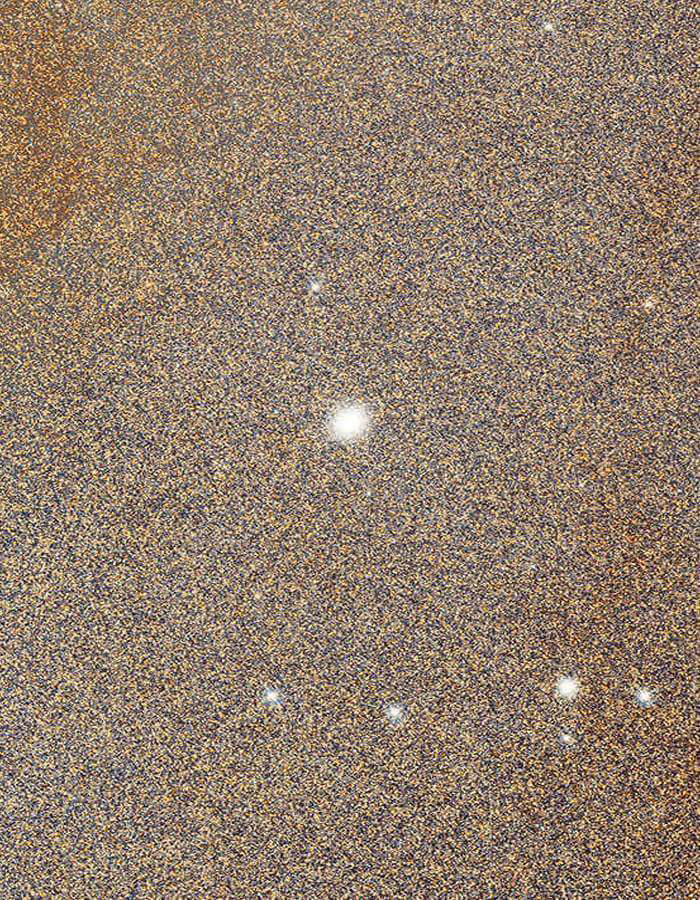How big is our Milky way Galaxy?
Miniscule. It just takes one lakh year, if someone can travel at the speed of light, which is 1,86,000 miles per second from one edge to another of Milky Way Galaxy. Can you imagine the distance I'm talking about? Yet, why do I say our galaxy is miniscule. Our Galaxy is indeed miniscule in the context of the universe. Only the observable universe has billions of such galaxies, then factor in the remainder. Our reality doesn't hold any validity in the vastness of galaxy or space or universe.
After weeks, night sky is visible. I gazed the darkness. Magnificent. I'm lost in the void. Universe is pretty big. How big? The observable universe (what sophasticated space telescopes could measure) alone has 2 trillion galaxies. Now, how big is our host, milky way galaxy? One lakh light years, let me put into perspective, if I'm able to travel at the speed of light, which is 186,000 miles per second, it would take one lakh year to travel from one edge to another, only the length of Milky Way galaxy. I'm not talking about the reminder of Milky Way. What did I say before? The observable universe alone has 2 trillion galaxies. What about the rest? Imagine how big the universe is? Some argue that it all came into existence from nothing - space time singularity. But, what it means to me is, I really don't believe in anything, and I'm increasingly becoming free when I attempt to study them. You may differ. But I can say one thing, whatever your beliefs or values are, do they mean anything in the context of this void - universe? Perhaps, the virtue of being human makes us believe in something. I wonder. But, I'm immersed in nothingness or space. Most importantly, i'm peaceful and humbled when I gaze the night sky.
Image credit: #NASA/#HubbleSpaceTelescope
An intriguing illustration of how big our universe is from "Contact" (1997):
https://youtu.be/EWwhQB3TKXA
A massive #blackhole, with mass four million times that of our sun, is at the center of our galaxy, Milky Way. Even though, its gravity is pulling everything towards it, including light, its sheer pull is what keeping the galaxy intact. Black hole has never been photographed, it is not possible to do so in visible wavelength, but in radio waves. A project named #EventHorizonTelescope, collaboration of telescopes across parts of our world, and scientists and graduates from prestigious institutes, likes of MIT and Harvard, have joined together in the process of imaging our black hole in April of 2017. It is most likely, we will get to see the first image of black hole by December of 2017. The idea that we would be able to view and study the black hole is incredibly fascinating as black hole or astronomically, space-time singularity is the origin of universe. #BT
Image Credit: BBC (Black Hole simulation based on Albert Einstein's relativity theory)
October 4, 2018:
A first #Exomoon is found?
Let's us what is an exoplanet first? A planet orbiting a star outside of our solar system is an exoplanet. There are 3500 such exoplanets found, possibly supporting organic life forms. Now, an Exomoon is a moon orbiting an exoplanet. This Exomoon discovered by #NASA's #HubbleSpaceTelescope and #Kepler spacecraft use reduction in light reflected from a planetary body, when an object orbits or obstructs it's light. This possible Exomoon is 8000 light years away from Earth. It signifies that if we humans can travel at the speed of light, which is 186,000 miles per second, it would take 8000 years to reach that moon. Now, do the math and calculate the sheer size of our galaxy 'Milky Way'. Only the observable universe comprises of billions of such galaxies. Then, imagine the section of the universe, which is not yet observed. Bewildering, isn't? That's why I have become metaphysical in the process of studying the space.
#BT - spacefarer
Image credit: NASA - National Aeronautics and Space Administration
For further study:
https://www.nasa.gov/press-release/astronomers-find-first-evidence-of-possible-moon-outside-our-solar-system
For further study:
https://youtu.be/3lQA9K9CrQk
October 8, 2017:
Each grain is a star, of the galaxy, Andromeda, 2.5 million light years away from us (Milky Way galaxy). Roughly, Andromeda has 500 million stars. To put in a perspective, a light year is briefly, the distance travelled by light in a year - the speed of light is 186,000 miles/second. Therefore, imagine the distance, light can cover in a year. More importantly, just imagine the size of vast vacuum of space. Incomprehensible. I'm just getting lost thinking about them.
Image source: ESA - European Space Agency.
Captured by Hubble Space Telescope.
Anish this is what we were talking about I suppose.
You would realize how insignificant we are not only as a planet, but as a galaxy in the context of the infinite universe, if you choose to watch the opening sequence of 'Contact' (1997), directed by auteur Robert Zemeckis, which is an adaptation of the novel of the same name, by irreplaceable cosmologist Carl Sagan.
https://youtu.be/3LcR_B3t7B0
20th November:
Happy birthday Dr. Edwin Hubble, a world war I veteran, cosmologist, who was born on November 20, 1889. The Hubble Space Telescope, was named after him as a commemoration of his breakthrough discovery of the expansion of the universe. Then, it was widely considered that 'Milky Way' galaxy was among few other galaxies in the universe. Dr Hubble, determined that, there were innumerable galaxies, expanding and moving away, which signified that the universe itself was expanding. Perhaps, he paved path for the inception of theory of multiverse - coexistence of multiple universes or bulk.
Image credit: curiosity.com
If you can travel at the speed of light, which is 1,86,000 miles per second, which is forbidden by the known physical laws, you will reach the star or the black-hole pictured here in 27,000 years.
The presence of a massive black-hole at the center of every galaxy is very likely. Our host, the milky way galaxy had been scientifically speculated to have one, and now it's visually proven. Thanks to Event Horizon Telescope (EHT), which radio observed the light emitting from the hot gas swirling the event horizon of the black hole named "Sagittarius A* "or" Sgr A". Remember, this is not an actual image as the optical light can't penetrate enough through gas and dust and reach the observatories but X-Ray can.
https://www.nasa.gov/mission_pages/chandra/images/sagittarius-a-nasa-telescopes-support-event-horizon-telescope-in-studying-milky-ways.html
https://chandra.harvard.edu/photo/2022/sgra/
https://eventhorizontelescope.org/blog/astronomers-reveal-first-image-black-hole-heart-our-galaxy
July 13 | 2023
Each dot in this picture shot by the cosmic time machine, where I'm held captive is a galaxy. And, each galaxy is at least in thousands of light years in diameter.
Image Credit: James Webb Telescope / NASA
Authored by Balaji Thangapandian aka #BT - a spacefarer, who is also curious about film-making, connectivity technologies and military history.













Comments
Post a Comment